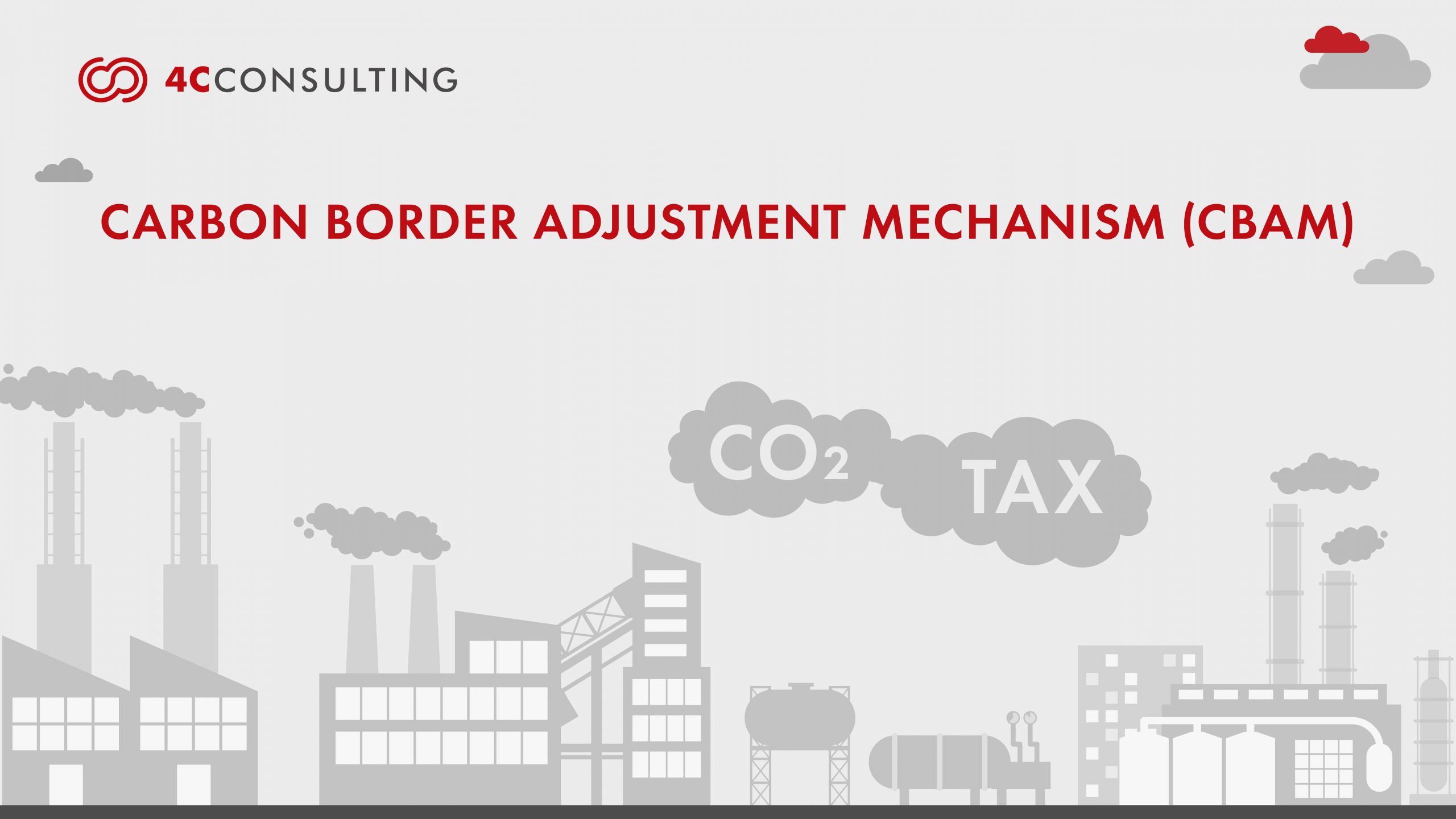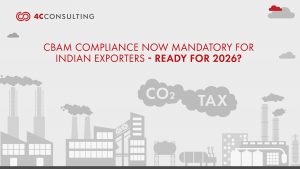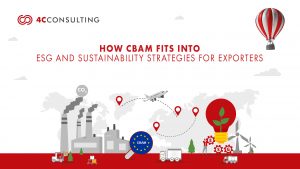
WHAT IS CBAM? UNDERSTANDING EU’S CARBON BORDER ADJUSTMENT Mechanism
12th Jul, 2024
In the face of escalating climate change challenges, the European Union (EU) has been a leader in implementing strong environmental policies. One notable initiative is the Carbon Border Adjustment Mechanism. This CBAM policy tool aims to tackle carbon leakage and promote global emissions reductions by ensuring fair competition between EU-produced goods and imports from countries with less stringent environmental regulations. This blog explores the details of CBAM, its importance, requirements, benefits, and its broader impact on global trade and climate efforts.
.
WHAT IS CBAM?
The Carbon Border Adjustment Mechanism (CBAM) is a policy tool introduced by the European Union to address carbon leakage and ensure fair competition for its industries. Carbon leakage happens when businesses move production to countries with looser emission regulations to avoid the costs of strict environmental rules at home. CBAM aims to mitigate this issue by imposing a carbon price on imports of certain goods. This way, the carbon cost of imported products aligns with that of goods produced within the EU, which follow strict climate policies.
CBAM primarily targets sectors that are both emissions-intensive and exposed to international competition. Initially, the mechanism focuses on :
- Iron And Steel
- Cement
- Fertilizers
- Aluminium
- Electricity Sectors.
By doing so, the EU aims to encourage other countries to adopt more rigorous climate policies, thus contributing to global efforts to combat climate change.
.
WHY CBAM?
The Carbon Border Adjustment Mechanism (CBAM) is driven by various economic, environmental, and political objectives. This policy aims to address the differences in environmental regulations between the EU and other regions, ensure fair competition, and promote global climate action. By implementing CBAM, the EU seeks to protect its industries from unfair competition, prevent the outsourcing of carbon emissions, and encourage global efforts to reduce emissions.
.
Stay Trade-Compliant and ESG-Aligned with CBAM Readiness Support.
.
Here are the key reasons why CBAM is essential:
- Levelling the Playing Field: EU industries often face higher costs due to strict environmental regulations. CBAM ensures that imported goods are subject to similar carbon costs, preventing foreign competitors from gaining an unfair advantage by bypassing these regulations.
- Preventing Carbon Leakage: Without CBAM, there is a risk that industries might relocate to countries with more lenient environmental rules, leading to increased global emissions. CBAM discourages this by making such moves economically disadvantageous.
- Promoting Global Climate Action: CBAM incentivizes non-EU countries to strengthen their climate policies. Since the EU is a significant market, countries exporting to the EU will be motivated to reduce their carbon emissions to avoid the extra costs imposed by CBAM.
- Supporting EU Climate Goals: The EU aims to achieve carbon neutrality by 2050. CBAM helps by ensuring that carbon-intensive imports do not undermine the EU’s domestic efforts to reduce emissions.
- Encouraging Innovation and Investment: By imposing carbon costs on imports, CBAM encourages industries inside and outside the EU to invest in cleaner technologies and production methods. This fosters innovation, accelerates the development of sustainable solutions, and drives investment in green technologies, aiding the global transition to a low-carbon economy.
.
WHO CAN GET CBAM?
CBAM’s comprehensive approach highlights the EU’s dedication to combating climate change while maintaining economic competitiveness and fairness on a global scale. CBAM impacts a broad range of stakeholders, including importers, producers, and various sectors:
- Importers: Companies importing goods into the EU within the targeted sectors (iron and steel, cement, fertilizers, aluminium, and electricity) will need to comply with CBAM regulations. These importers must ensure that their products meet the carbon pricing requirements, aligning with the EU’s stringent environmental standards.
- Producers: Producers outside the EU who export to the EU market will also be affected. They must provide accurate data on the carbon emissions associated with their products. This may require adjustments in their production processes to reduce carbon intensity, ensuring their products can compete fairly in the EU market.
- Affected Sectors: Initially, CBAM targets specific high-emission sectors such as iron and steel, cement, fertilizers, aluminium, and electricity. However, the scope of CBAM may expand over time to include additional sectors. This broadening will increase its impact, encouraging more industries to adopt greener production methods and comply with global emission reduction standards.
.
ESSENTIAL CBAM COMPLIANCE REQUIREMENTS
Compliance with CBAM involves several critical requirements designed to ensure transparency and accountability:
- Carbon Emissions Reporting: Importers must accurately report the carbon emissions associated with the production of imported goods. This reporting includes both direct emissions from production processes and indirect emissions from electricity consumption. Detailed and transparent emissions reporting ensures that the true environmental impact of the goods is accounted for, providing a foundation for the carbon pricing mechanism.
- Carbon Pricing Compliance: Importers are required to purchase CBAM certificates equivalent to the carbon price that would have been incurred if the goods were produced under the EU’s carbon pricing rules. The cost of these certificates is linked to the price of allowances in the EU Emissions Trading System (EU ETS). This requirement aligns the carbon costs of imported goods with those of EU-produced goods, ensuring fair competition and encouraging global adherence to carbon pricing standards.
- Verification and Auditing: To ensure the accuracy and integrity of the reported emissions, importers must undergo verification by accredited third parties. These audits confirm the correctness of the reported emissions and verify that the necessary CBAM certificates have been purchased. Independent verification and auditing are critical for maintaining trust and accountability in the CBAM process, preventing fraud, and ensuring compliance.
- Registration and Documentation: Importers must register with the appropriate EU authorities and keep detailed records of their imports, carbon emissions, and CBAM certificate transactions. Maintaining accurate documentation is crucial for compliance and auditing, as it offers a clear and transparent record of all activities associated with CBAM. This requirement guarantees that importers can prove their compliance with CBAM regulations and simplifies the auditing process.
- Compliance Monitoring: Continuous monitoring and reporting are necessary to ensure ongoing compliance with CBAM regulations importers need to stay informed about any modifications in requirements and adapt their practices to ensure compliance with the EU’s environmental standards. Consistent evaluations and modifications to compliance strategies assist importers in remaining in sync with the ever-changing CBAM regulations, thereby bolstering the mechanism’s overall efficiency in curbing global carbon emissions.
.
WHAT ARE THE BENEFITS OF CBAM?
Implementing CBAM provides a wide range of benefits, reinforcing the EU’s commitment to environmental protection and economic fairness:
- Environmental Protection: CBAM encourages global adoption of cleaner production practices, significantly reducing carbon emissions. By making importers accountable for their carbon footprint, the mechanism ensures shared environmental responsibility, which is essential for effectively combating climate change and protecting ecosystems and human health.
- Economic Fairness: CBAM ensures EU industries are not unfairly disadvantaged by the EU’s strict environmental regulations. It levels the playing field by imposing equivalent carbon costs on imported goods, preventing foreign competitors from bypassing these costs and gaining an unfair market edge. This measure supports EU businesses and promotes fair competition based on sustainable practices.
- Innovation and Investment: CBAM stimulates innovation and investment in green technologies. By placing a financial value on carbon emissions, the mechanism encourages companies worldwide to develop and implement cleaner production methods. This leads to reduced emissions, technological advancements, and sustainable practices, aiding the global shift to a low-carbon economy.
- Global Leadership: CBAM positions the EU as a pioneer in global climate policy. By setting a standard for carbon pricing on imports, the EU encourages other regions to adopt similar measures. This leadership fosters a cohesive global approach to climate action, inspiring countries to enhance their environmental policies and collaborate on emission reduction efforts.
- Compliance and Transparency: The strict reporting and verification requirements of CBAM guarantee transparency and accountability in carbon emissions. Importers are required to provide precise emissions data and undergo independent verification, guaranteeing the accuracy and reliability of the information. This openness is crucial for the mechanism’s successful execution, fostering trust and confidence in the EU’s climate policies.
The carbon border adjustment mechanism (CBAM) plays a crucial role in the EU’s plan to combat climate change and encourage worldwide efforts to reduce emissions. By implementing a carbon price on imported goods, CBAM promotes fair competition, prevents carbon leakage, and incentivizes cleaner production methods globally. Its strict regulations promote openness and adherence, while its advantages extend beyond environmental preservation to economic equity, innovation, and global influence. As CBAM continues to develop and grow, it will play a pivotal role in shaping a sustainable and fair future, showcasing the EU’s dedication to addressing climate change and setting an example for environmental accountability worldwide.
.
HOW 4C CAN ASSIST YOU WITH IMPLEMENTING THE CARBON BORDER ADJUSTMENT MECHANISM (CBAM)
At 4C Consulting, we bring over 15+ years of experience to help you navigate the Carbon Border Adjustment Mechanism (CBAM) and enhance sustainability. Our tailored approach simplifies CBAM compliance, focusing on accurate GHG carbon emissions calculations and practical steps to meet regulations. We support you in reducing your carbon footprint and improving environmental performance. With continuous guidance and updates, we ensure your business stays compliant with evolving standards. Partner with us to elevate your sustainability efforts – Contact our experts today to get started CBAM Consulting.


